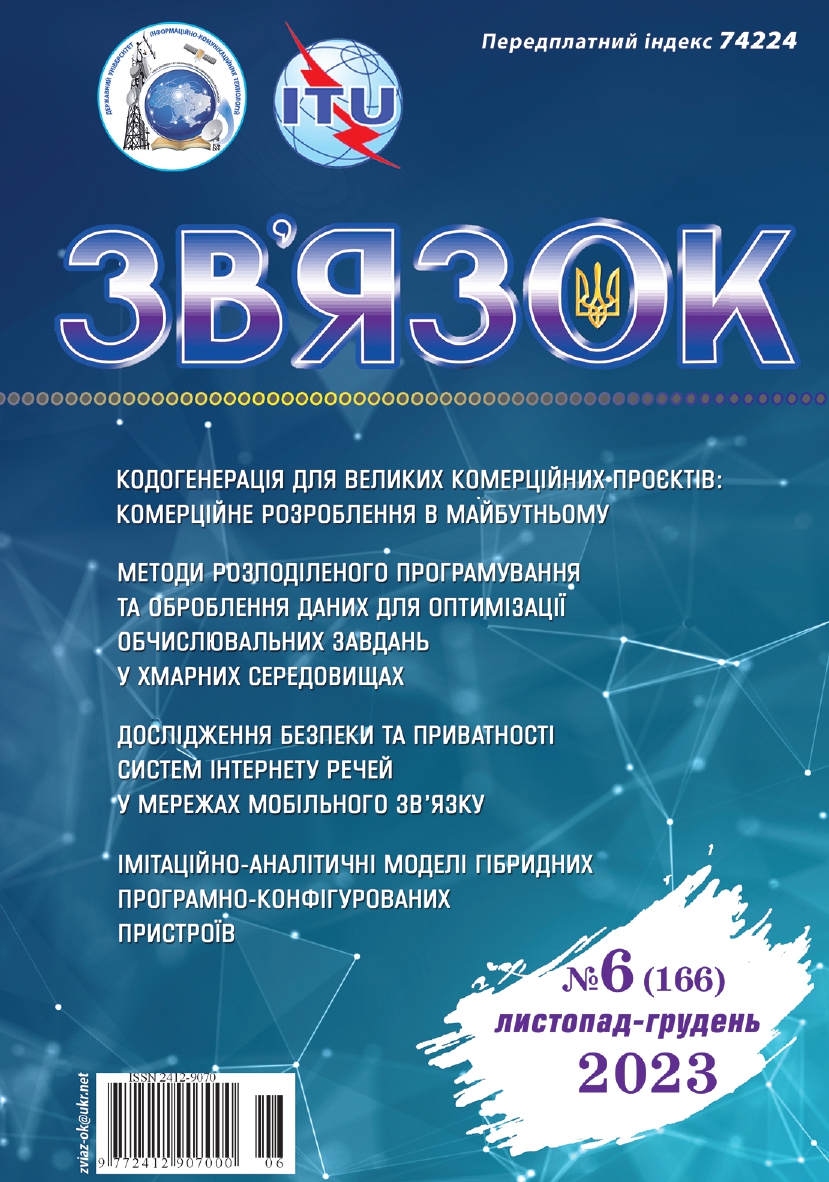Традиційне ядро DOM (Document Object Model) та його формальне подання fDOM
DOI: 10.31673/2412-9070.2023.062327
Анотація
Розглянуто відмінність між двома моделями вебдокументів: традиційним DOM (Document Object Model) та fDOM (формальним DOM). Описано Core DOM, який є структурою вебдокументів як ієрархічне дерево вузлів. Кожен вузол відображає елементи, атрибути та текстовий вміст, що дає змогу навігувати, модифікувати та видаляти компоненти документа. На прикладі HTML-коду проілюстровано візуальну структуру DOM. Далі розкрито використання Isabelle/HOL, системи логіки вищого порядку, для роботи з fDOM, що уможливлює формалізацію математичних властивостей fDOM з переконанням у їхній коректності та стійкості до вразливостей. Приклад коду на Isabelle/HOL продемонстрував, як можна визначати та перевіряти операції над елементами вебдокументів. Здійснено порівняння між DOM та fDOM, зазначаючи відмінності в їх підходах до подання та взаємодії з вебдокументами. Наголошено, що традиційний DOM забезпечує гнучкий інтерфейс для вебдокументів, тоді як fDOM пропонує більш строге математичне подання, зосереджене на точності. Сформульовано переваги та недоліки fDOM. Серед переваг виокремлено формальну верифікацію, сильну типізацію, послідовність у поведінці, чіткість визначень та підвищену безпеку. Проте звернено увагу на збільшення складності та часу на розроблення, меншу гнучкість, вищі витрати на ресурси та круту криву навчання, які є недоліками fDOM. Висновок акцентує на тому, що fDOM пропонує надійну, перевірену основу для вебзастосунків, але також вносить додаткові вимоги до процесу розроблення, що робить його особливо корисним для застосунків, де важливі правильність і безпека.
Ключові слова: fDOM; Isabelle/HOL; вебкомпоненти; інформаційні системи; вебтехнології; масштабування вебзастосунків; оптимізація.
Список використаної літератури
1. Haverbeke M. Eloquent JavaScript: A Modern Introduction to Programming. 3rd Edition. No Starch Press, 2018.
2. Pilgrim M., Russell A. Dive Into HTML5 and the DOM. O’Reilly Media, 2019.
3. Lowe D. Web Development All-in-One For Dummies. John Wiley & Sons, 2019.
4. Keith J. DOM Enlightenment: Exploring JavaScript and the Modern DOM. O’Reilly Media, 2019.
5. Gasston P. The Modern Web: Multi-Device Web Development with HTML5, CSS3, and JavaScript. No Starch Press, 2020.
6. Freeman E., Robson E. Head First HTML and CSS: A Learner’s Guide to Creating Standards-Based Web Pages. 3rd Edition. O’Reilly Media, 2020.
7. Clark K. HTML5 and CSS3 All-in-One For Dummies. 4th Edition. John Wiley & Sons, 2021.
8. Palermo J. Progressive Web Apps with Angular: Create Responsive, Fast and Scalable Web Applications. Apress, 2019.

